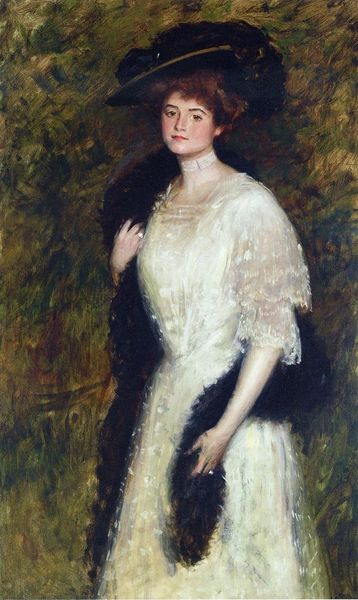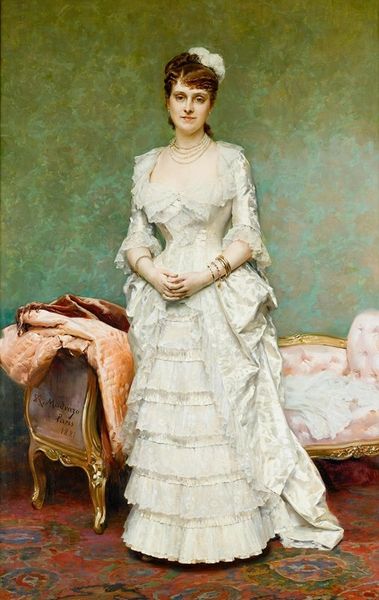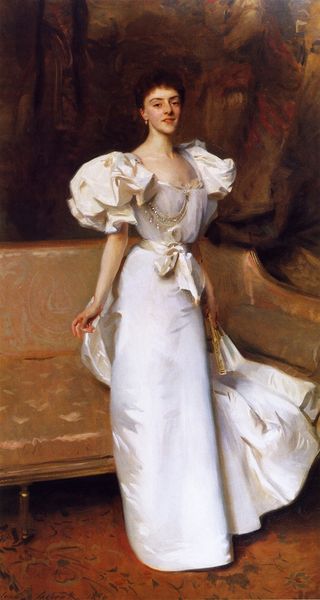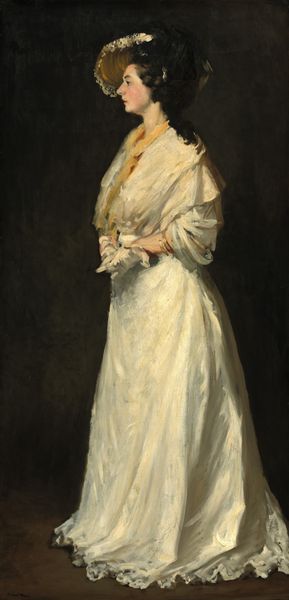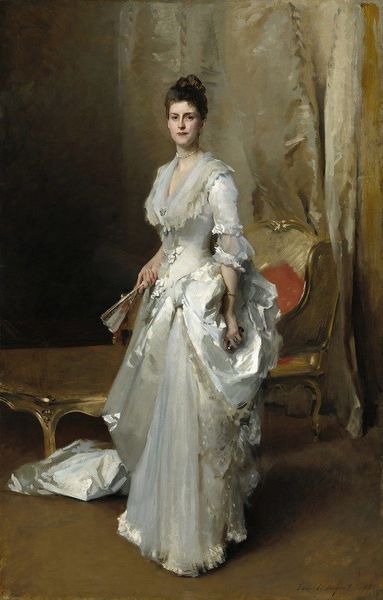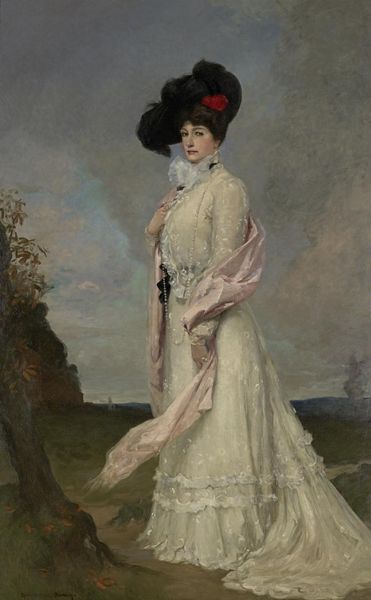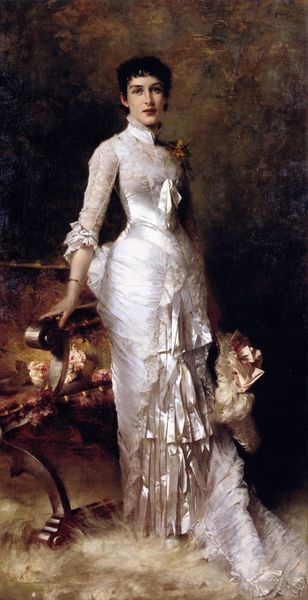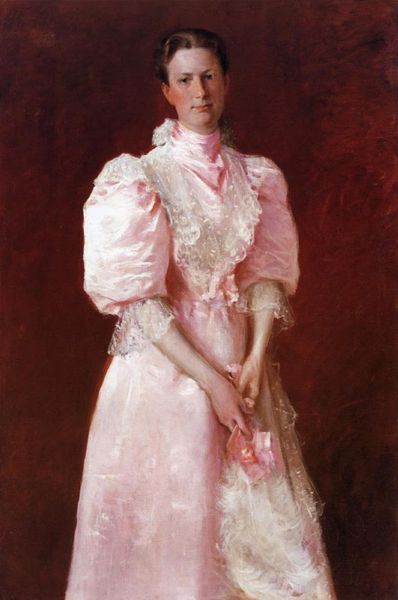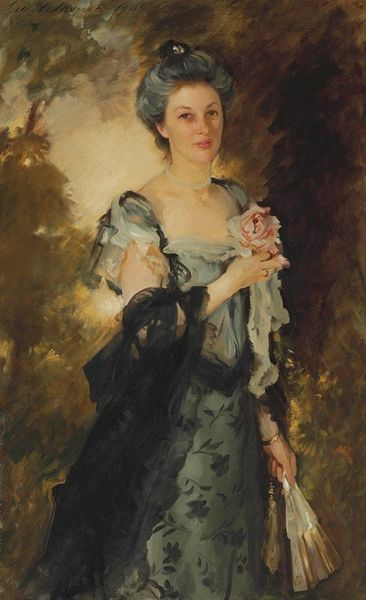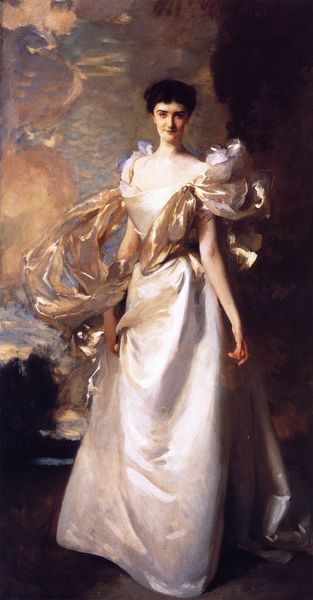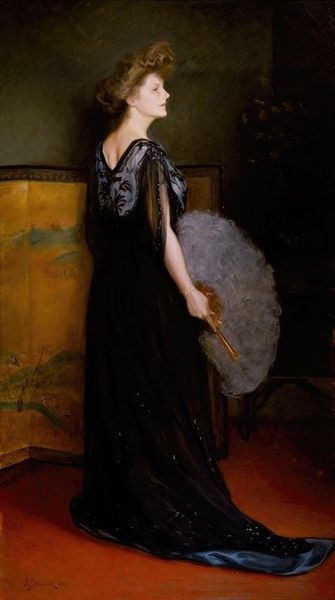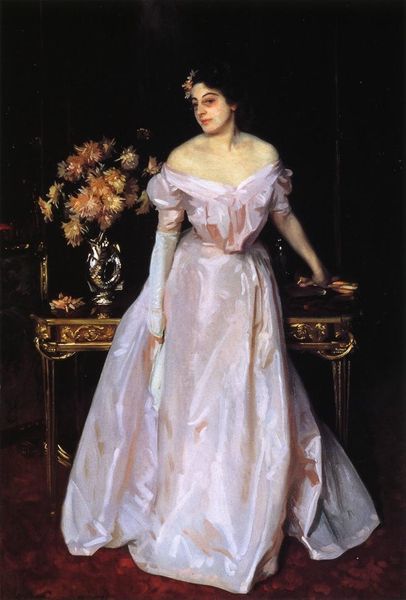
oil-paint
#
portrait
#
oil-paint
#
landscape
#
figuration
#
romanticism
#
surrealism
#
green
#
genre-painting
#
lady
#
dress
#
realism
Copyright: Public domain
Curator: James Archer's "Mary Carrie," rendered in oil paint, presents a figure caught between realism and a dreamlike romanticism. The way she regards us, almost over her shoulder, is instantly arresting. Editor: Yes, there's a subtle drama at play. The somber earth tones of the surrounding forest contrast starkly with the creamy white of her dress. The luminosity of that fabric pulls you in; it’s almost otherworldly. Curator: Observe how Archer handles the folds and the weight of that dress, its materiality—you can practically feel the rustle of silk and lace. It's indicative of the kind of social performance attached to clothing and feminine representation in the era that produced the work. Editor: Absolutely. And there’s the hat, tilted at a perfect angle! The arrangement of forms creates this cascade of descending diagonals— from her gaze to the drape of her gown— that draws your eye downward. Curator: Let's also consider the labor that would have gone into creating such an elaborate garment. It speaks volumes about class and access. Furthermore, her posture—a slight twist, an upward glance—conveys both poise and vulnerability. Editor: True, there’s tension between those visual cues. The way Archer blends those earthen browns and umbers to frame her against what seems like an infinite forest is particularly striking. And the light source! The angle illuminates the woman and nothing more. It’s divine. Curator: Considering the painting was potentially created and consumed within specific social circles, one can consider what message a portrait such as this communicated about her status, wealth and desirability. Editor: Ultimately, the piece lingers in memory because of how the artist orchestrates formal contrasts, of dark versus light, movement versus stillness, directness versus obscurity. Curator: Thinking about Archer’s process really emphasizes that artworks don't just materialize in a vacuum. This image is not just beautiful but serves as evidence of complex social, historical, and material conditions. Editor: Seeing that the woman serves as an anchor between nature’s palette and pristine artifice deepens my reading of the artist’s creative impulse. It’s quite profound, wouldn’t you say?
Comments
No comments
Be the first to comment and join the conversation on the ultimate creative platform.
